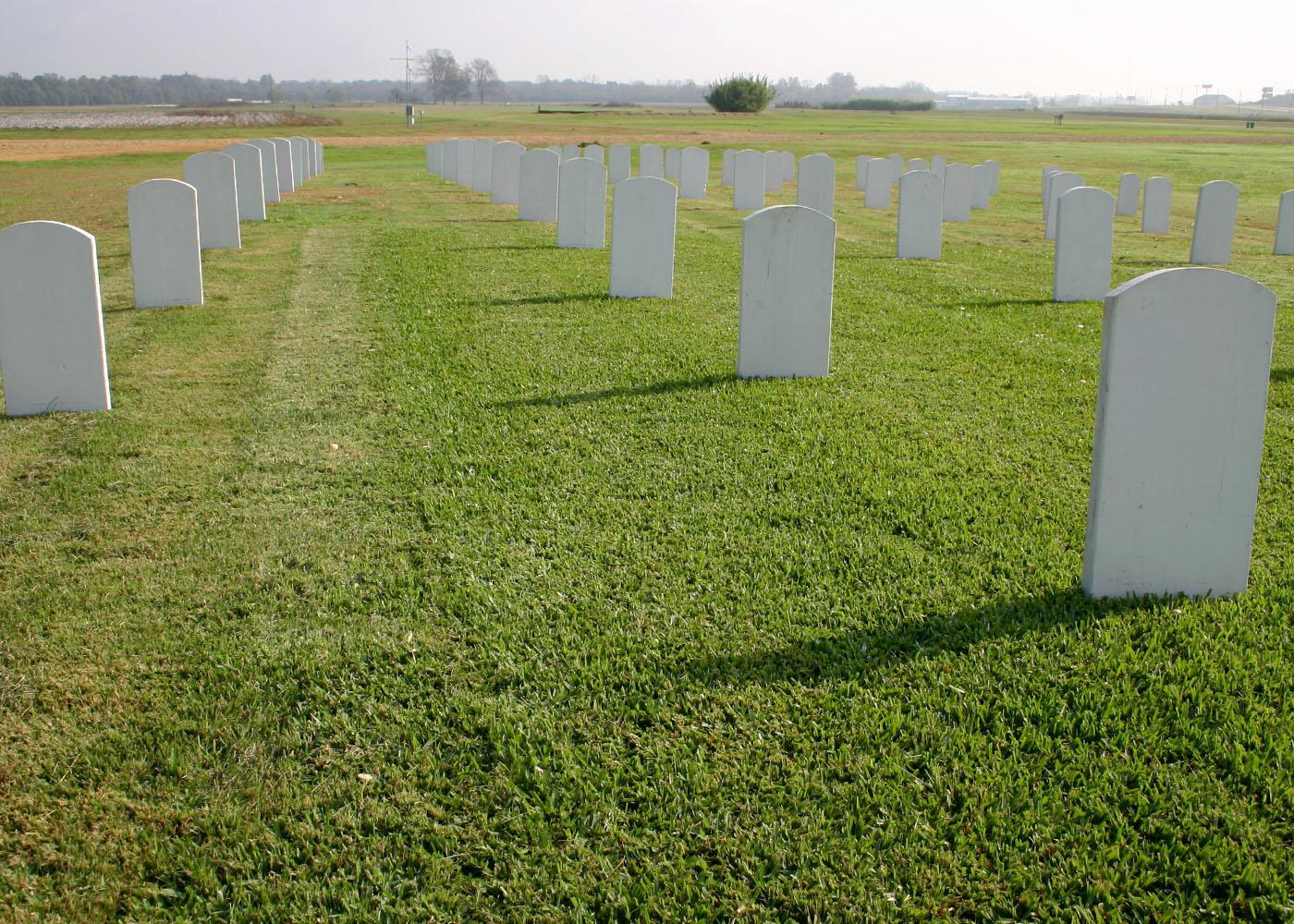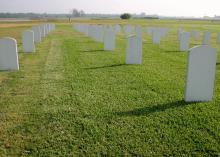Information Possibly Outdated
The information presented on this page was originally released on October 21, 2010. It may not be outdated, but please search our site for more current information. If you plan to quote or reference this information in a publication, please check with the Extension specialist or author before proceeding.
MSU study examines turf for cemetery use
MISSISSIPPI STATE – Mississippi State University researchers found it takes a special kind of turf to keep a cemetery looking nice without frequent maintenance.
Wayne Philley, an agronomist with the Mississippi Agricultural and Forestry Experiment Station, was the lead researcher on a three-year study that examined turf’s performance and maintenance requirements in a cemetery setting.
Researchers planted St. Augustinegrass, centipedegrass, zoysiagrass, bermudagrass and Mississippi Supreme, an ultra-dwarf bermudagrass. They examined each turf’s performance in Mississippi’s climate, its mowing requirements, and its ability to compete with weeds without regular fertilizer applications.
“The big challenge with cemeteries is budget. If you want a cemetery to look good, there is nothing that will look better than turf, but it is expensive to maintain,” Philley said. “The more you put into turf, the better it looks, but maintenance can be expensive.”
Wayne Wells, turf specialist with the MSU Extension Service, said the state has many small church and private cemeteries scattered across each county. There are no actual data on the number of acres in cemeteries in the state, but he estimated there are more than 3,000 acres of cemeteries in Mississippi.
“There is a wide range of costs to maintain cemeteries per acre, as some do nothing more than mow, while others fertilize, water, mow, edge, maintain shrubs, and have scheduled flower placements and removals,” Wells said. “I would estimate a range of $300 per acre per year for those who do minimal maintenance up to $1,200 per acre per year for those who do extensive maintenance.”
Wells said new, large, for-profit cemeteries typically use one species of turf and organize plots into straight rows. Small church and private cemeteries may contain several species of turf planted by family members, and plots are often randomly placed, making maintenance much more difficult.
Weeds are a challenge to all lawns in the state, and cemeteries are no exception. Many cemeteries are old and located on church or family property. These are usually maintained as needed by a church member or relative using just a mower and string trimmer.
“Weeds take away from the uniformity of the turf,” Philley said. “The first and best defense against weeds is healthy, actively growing turf. Good turf management requires frequent mowing, fertility, weed control and disease control. There may be a cemetery out there that does all these practices, but most of them don’t have the budget.”
Another challenge is establishing turf quickly over a newly dug grave site. Philley said digging a grave exposes the subsoil. It is difficult to establish turf on subsoil rather than topsoil, especially without irrigation.
“Many families want to put turf on their gravesites, and if the area is small enough, it is reasonable to use sod,” Philley said.
The MSU cemetery turf study took all these factors into consideration and came up with some primary research findings.
“St. Augustine is a high quality turf that requires at least weekly mowing, and it works fine in the southern half of the state, especially the lower third of the state,” Philley said. “Farther north it faces more chances of winter injury. St. Augustine is the most shade tolerant of the warm-season turfgrasses but one of the least cold tolerant.”
Centipede is well adapted to poor soils, but it does not have the color or lush density of St. Augustine or zoysia. However, it is a good, low-maintenance grass that grows well without nitrogen fertilizer.
“Zoysia established from sod is a good choice. If it is good sod and you can supply enough water to get it established, it will last for a long time,” Philley said. “It is difficult to mow because of the silica in the leaf blades, but well-maintained mowers can do a good job cutting it.
“Solid sod is the only recommended method of planting zoysiagrass in cemeteries. Plugging or sprigging methods are too slow and will likely result in weed establishment,” he said.
Bermudagrass is a good choice if the cemetery will be highly maintained, but this turf requires regular nitrogen applications to compete with weeds. The researchers also tested ultra dwarf bermudagrass such as Mississippi-Supreme but found it will not work well in nonfertilized cemeteries.
Philley said the university did not receive funding for this research, but saw a need to address this important question.
“We’ve had quite a bit of interest in this small experiment because very little cemetery-related research is being done elsewhere,” Philley said.
The study was conducted on MSU’s North Farm from 2003-2006.





